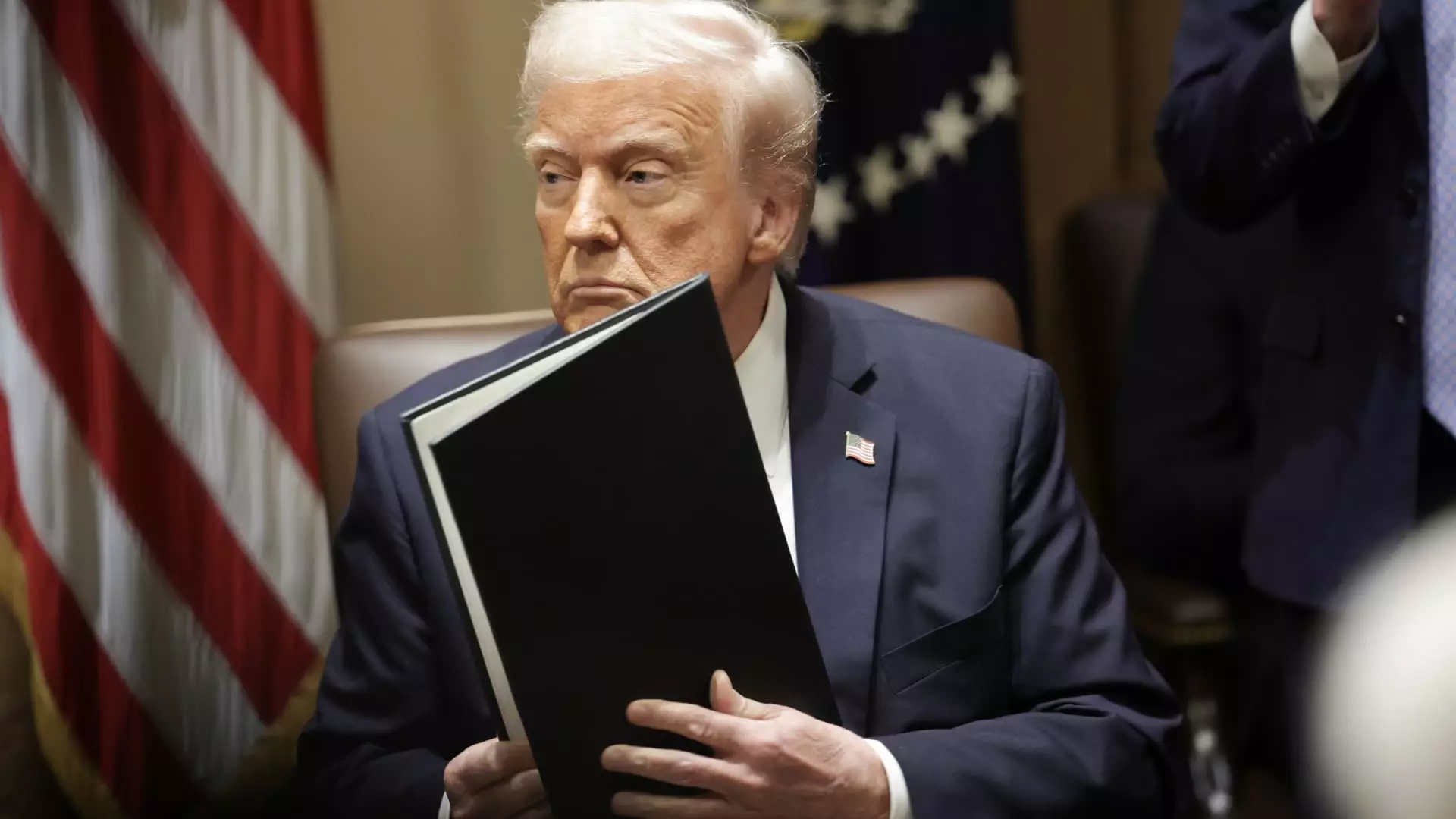With the recent announcement that President Donald Trump is set to introduce new tariffs on auto imports, the air has become thick with uncertainty and trepidation. This revelation comes amidst a series of tantalizing hints dropping from the White House, wherein Trump alluded that these measures, expected to arrive before April 2nd, could either escalate tensions or present a softer reality than anticipated. The phrase “reciprocal tariffs” is bandied about like a scare tactic, sending shivers through business leaders and investors alike.
As history has shown, Trump’s approach to economic policy is anything but predictable. The stock market reacted violently to his latest tariffs revelation, falling sharply as the news broke. Businesses rely on consistency and clarity to make plans, but this kind of erratic behavior creates an environment of chaos where companies are left to second-guess their next moves.
Promises of “Liberation Day” and Disillusionment
Trump has dubbed April 2nd as “liberation day”—a term that epitomizes an intense yearning for a nationalist economic resurgence. Yet, the reality of such proclamations seems detached from the ordinary American worker’s plight. The sweeping policies announced are poised not to liberate but to impose restrictions that could hurt the very industries that form the backbone of the economy. While Trump touts the strength of American manufacturing, these tariffs could backfire, escalating costs for consumers and stunting growth.
Palm a little deeper into this, and one uncovers a paradox. The President, while aiming to bolster domestic production, risks alienating foreign partners who might retaliate, thereby inviting a trade war that could make buyers pay higher prices for goods. It’s a classic “you scratch my back, I scratch yours” scenario gone awry—what’s supposed to represent mutual benefit instead teeters on the brink of conflict.
A Shifting Landscape of Flexibility
Even with the soaring rhetoric, Trump’s own administration hints at a potential retreat from the stringent measures initially proposed. Treasury Secretary Scott Bessent insists on the possibility of pre-negotiation, proposing a softer landing than might be expected. One must grapple with the notion: Is this flexibility a sign of wisdom or an acknowledgment of the inevitable backlash anticipated from both the public and the marketplace? The answer might lie somewhere in the murky waters of political strategy rather than pure economic benefit.
It stands to reason that when a policy springs forth from unpredictability and fluctuating sentiments, the outcomes are likely to be just as unstable. Tariffs are a double-edged sword; wielded recklessly, they can cut deep into the very fabric of the economy. Business leaders find themselves in an agonizing limbo, forced to navigate through a landscape characterized by impulsivity rather than structured foresight.
The Unraveling Fabric of Free Trade
Ultimately, declarative statements like these unequivocally demonstrate a departure from established free trade principles—an economic ideology that has historically provided the U.S. a competitive edge. Trump’s brand of trade policy is rooted in a protectionist mindset that stands in stark contrast to the globalized world we inhabit.
As the clock ticks down to April 2nd, it remains to be seen whether the whims of a single leader can reshape the fundamental economic principles that have governed international trade for decades. The repercussions of this gamble could resonate far beyond the press conference, affecting the wallets of everyday Americans and redefining the American Dream.

Leave a Reply